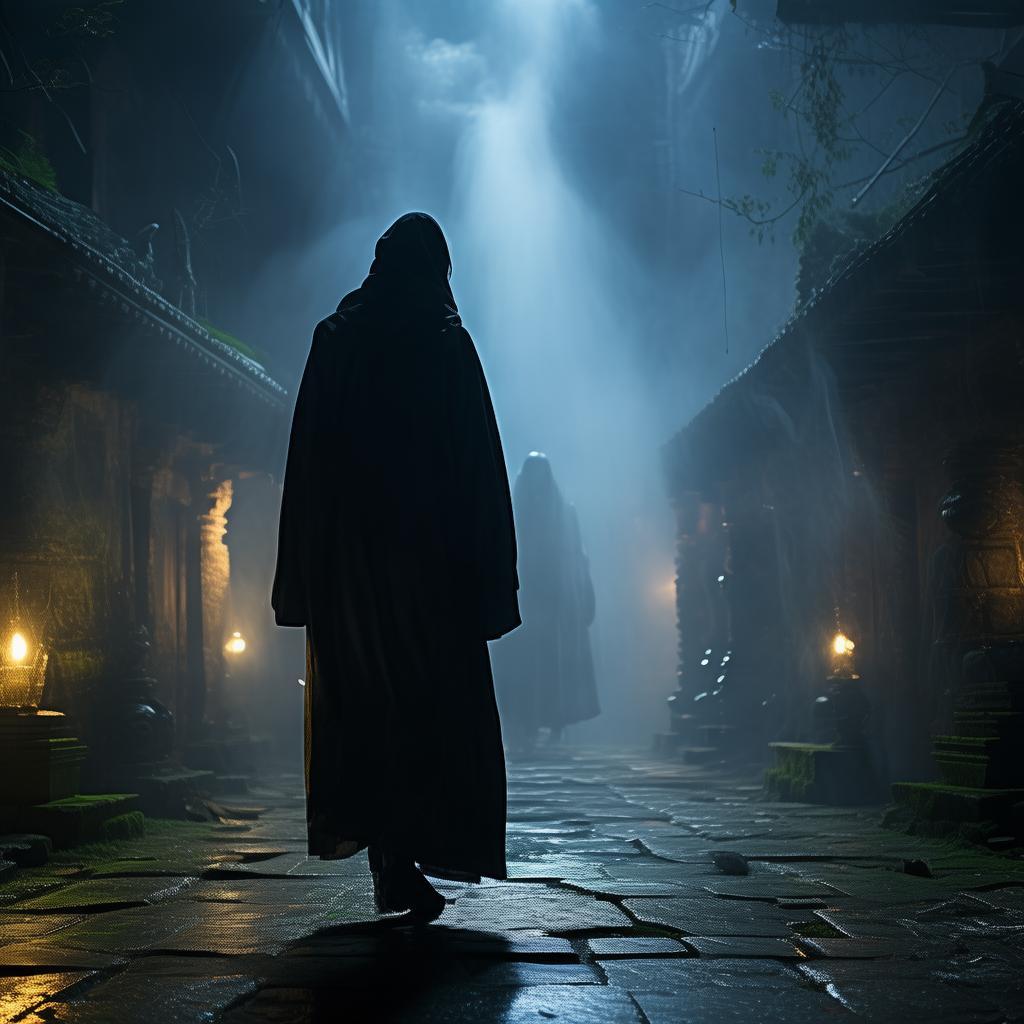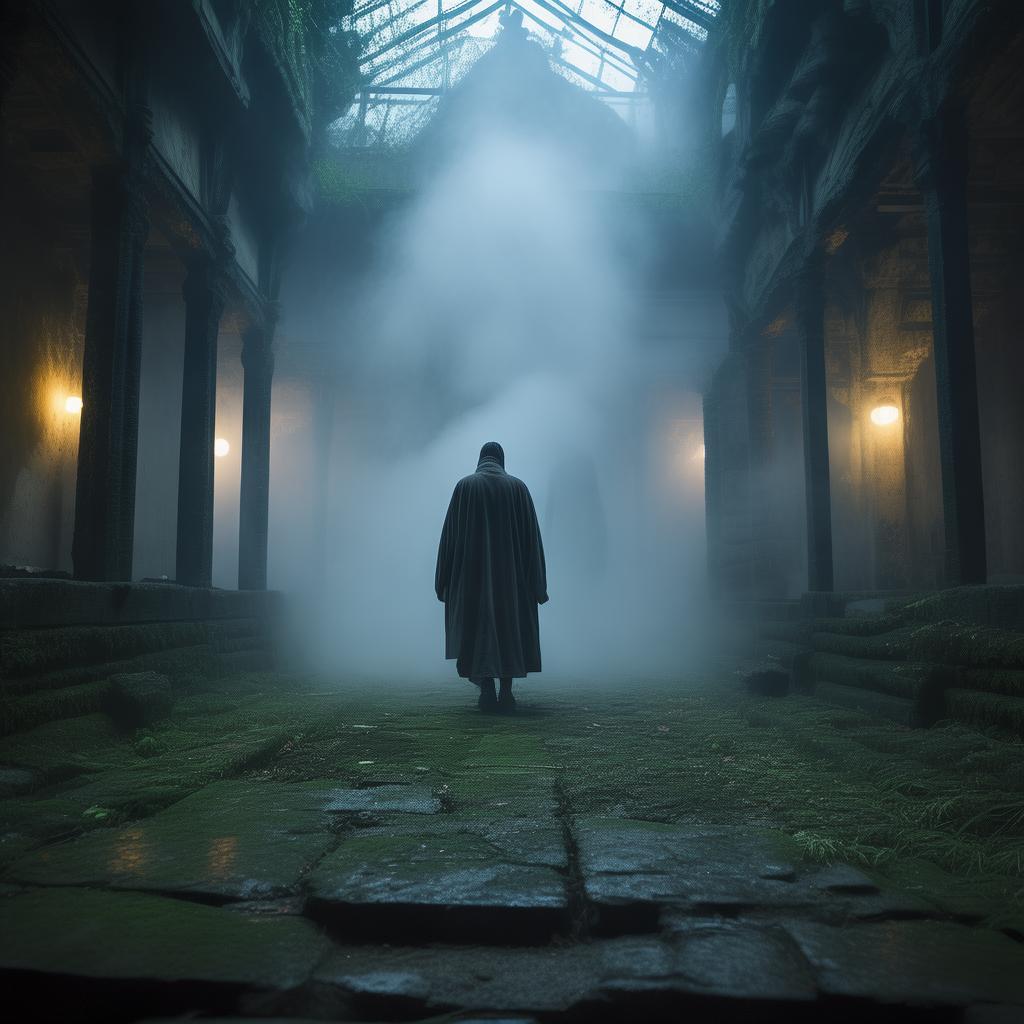The Picture's Paradox: A Frame of Mind that Bent Reality
The sun dipped below the horizon, casting a golden hue over the quaint town of Seabrook. The sea whispered its eternal lullaby, and the salty breeze carried the scent of the ocean mixed with the faint aroma of blooming jasmine. It was an ordinary evening, yet tonight, the town would never be the same.
Eliza, a young artist with a penchant for the supernatural, had recently moved to Seabrook to find inspiration for her next masterpiece. She had heard tales of the town's eerie history and was intrigued by the legends of ghostly apparitions and unexplained phenomena. It was during her exploration of the local library that she stumbled upon an old, tattered photograph.
The photograph depicted a serene beach at sunset, with a group of people enjoying a picnic. Eliza's eyes were drawn to a young woman sitting alone on the sand, her back to the camera. There was something hauntingly familiar about her, as if she had seen this woman before in a dream or a memory.
Intrigued, Eliza took the photograph home, not realizing the profound impact it would have on her life. As the days passed, she began to experience strange occurrences. Objects would move on their own, shadows would dance in the corners of her room, and she would hear faint whispers in the dead of night.
One evening, as Eliza sat at her easel, painting the beach scene from the photograph, she felt a sudden chill. She turned to see a shadowy figure standing in the doorway, its eyes glowing with an eerie light. The figure's presence was overwhelming, and Eliza felt as if she were being pulled into a vortex of darkness.
"Who are you?" she whispered, her voice trembling.
The figure did not respond, but instead, it reached out and touched the photograph. The image blurred, and Eliza felt a sharp pain in her chest. She fell to the floor, her vision blurring as she gasped for breath.
When she opened her eyes, the room was a whirlwind of colors and shapes. She was no longer in her studio; she was on the beach, surrounded by the same group of people from the photograph. The young woman sat alone, her eyes fixed on Eliza.
"Welcome," the woman said, her voice echoing in Eliza's mind. "You have been chosen to experience the true nature of reality."
Eliza's heart raced as she realized the truth of the woman's words. She was trapped in a paradox, a frame of mind that bent reality. The people in the photograph were not just images; they were real, and they were watching her every move.
As the days passed, Eliza learned that the woman was a guardian of the photograph, a being who had lived through countless lifetimes and witnessed the bending of reality. She explained that the photograph was a portal to a parallel world, a place where the fabric of time and space was twisted and reality was fluid.
Eliza's mission was to find a way to close the portal and return to her own world. But as she delved deeper into the mysteries of the parallel world, she discovered that the photograph was more than just a portal; it was a reflection of her own mind, a manifestation of her deepest fears and desires.
The guardian showed Eliza the parallel world's inhabitants, each a reflection of her own psyche. There was the artist who painted the same beach scene over and over, unable to escape the cycle of creation and destruction. There was the lover who was unable to let go of a lost love, living in a world where time stood still. And there was the child who was endlessly searching for her lost parents, her innocence corrupted by the world's harsh realities.
Eliza realized that she had to confront her own fears and desires if she wanted to close the portal. She had to face the monster within her, the part of herself that was afraid of love, afraid of loss, and afraid of the unknown.
One night, as the full moon hung low in the sky, Eliza stood on the beach, facing the photograph. She closed her eyes and took a deep breath, allowing herself to feel the full weight of her fears. She saw the monster within her, a twisted and twisted version of herself, and she reached out to embrace it.
As she did, the photograph began to glow, and the world around her shattered into a kaleidoscope of colors. Eliza felt herself being pulled through the portal, back to her own world.

When she opened her eyes, she was back in her studio, the photograph lying on the floor. She had returned, but something was different. She felt lighter, more at peace. She looked at the photograph and smiled, knowing that she had faced her fears and had emerged stronger.
Eliza returned to her painting, and as she worked, she felt a sense of clarity and purpose. She realized that the photograph had not only been a portal to another world but also a mirror to her own soul. It had shown her the true nature of reality, the fact that the mind could bend reality and that fear was the only thing that truly held us prisoner.
And so, Eliza's life continued, but with a newfound understanding of the world and herself. She painted the beach scene, not as a reflection of the parallel world, but as a reflection of her own journey, a journey of self-discovery and healing.
The Picture's Paradox: A Frame of Mind that Bent Reality was a story that would forever change the way Eliza saw the world. It was a tale of fear, love, and the human spirit's ability to overcome the darkest of times.
✨ Original Statement ✨
All articles published on this website (including but not limited to text, images, videos, and other content) are original or authorized for reposting and are protected by relevant laws. Without the explicit written permission of this website, no individual or organization may copy, modify, repost, or use the content for commercial purposes.
If you need to quote or cooperate, please contact this site for authorization. We reserve the right to pursue legal responsibility for any unauthorized use.
Hereby declared.









